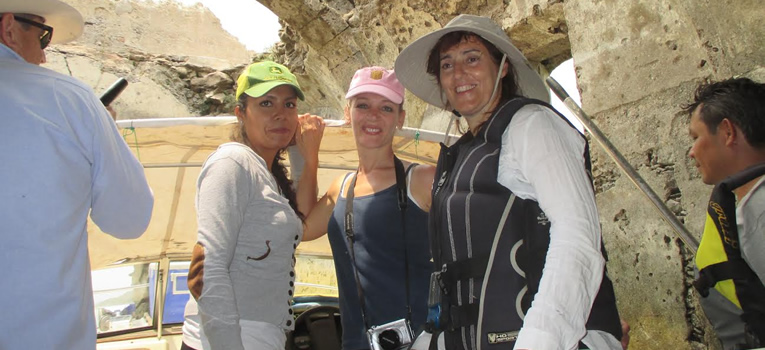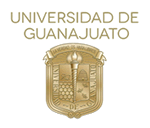
Irapuato, Gto., February 27, 2017. In the state of Guanajuato, one of the most important dams is "La Purisima". This water reservoir is in the Basin River Guanajuato, within the system Lerma-Chapala. However, there are few studies on the quality of the water it holds, they go back to more than 15 years. Hence, a group of researchers of the University of Guanajuato (UG) develop a project to know the actual and complete state of the place and propose sustainable strategies to solve the detected problems.
The project is led by the Ph.D. in Geological Sciences, Gabriela Zanor, ascribed to the Department of Environmental Sciences, in Campus Irapuato-Salamanca. The objective is to know the hydrochemistry of the water to evaluate its quality and the current trophic state of the body of water, both in drought and rain, considering that the last decades there has been an important populational growth around and an increment in the development of anthropic activities (agricultural, mining and industrial).
Likewise, it is important to make comparisons of the quality of water and how it has evolved through time, considering that the hydrological basin has treatment plants. There is also a quantification of the trace elements in the bottom sediments of the dam.
The dam has an important ecological function, stands out as the habitat of more than 200 birds, water, earth, resident and migratory species.
Some of them, need special protection, as the peregrine falcon and the red hawk. In addition, "La Purisima" develops an economical function, since there is an important quantity of fishermen in the surrounding communities. It is of great importance in the reload of the aquifer Silao-Romita and its fundamental for the agricultural sector since it provides to Watering Module 011, the largest in the state, and offers ludic alternatives.
Therefore, it is fundamental to evaluate the trophic state, this is, the relation of the dam nutrients and the growth of the organic matter in it. Some equipment capable of analyzing physical and chemical variables in field has been acquired to determine other parameters in the sediments.
The project approved by UG on the quality of water at the "La Purísima" dam, includes the trophic state, a study of the sediments and evaluation of the physic, chemical and metal parameters. It is important to analyze the human impact exercised on the basin's resources and the changes are registered in the deposited sediments in the bottom.
The analysis of the sediments is relevant because Guanajuato has an old mining tradition, and there weren't many precautions and technologies to extract the metals, mentioned Dr. Zanor, at the same time she remembered that these water reservoirs accumulate the material from all the basin.
To cover all these aspects, a collaboration between local and international researchers, and the participation of three Argentinian doctors. One of them, a physicist in the Universidad of Buenos Aires, who will analyze the magnetism in the sediments, which provides information on the environmental state of the reservoir.
Also, two researchers of the Universidad Nacional de Córdoba (Argentina) collaborate, one will focus on the modeling of the waters with specific software and the other, in studying hydrochemistry. Likewise, three professors of UG participate, Dr. Jaquelina González Castañeda, who will execute the analysis of chlorophyll and phosphorus in water, another professor of the Department of Veterinary, Rosario Martínez Yañez, will dedicate to the study of the fish and a professor of the Division of Engineering (Campus Guanajuato), Dr. María de Jesús Puy-Alquiza.
The project includes two students of the Educational Program of Environmental Engineering (DICIVA), who are theists and in training, one of them at the State Commission of Water (CEA).
It is a research work, highlighted Dr. Zanor, where through different areas and sciences you could do a comprehensive and current diagnosis of "La Purisima" dam. However, the idea is to provide solutions in short and medium term for a better handling and management of the hydric resource.
"At the Department of Environmental Sciences, us professors are focused on solving the environmental problems that occur in the environment and be able to provide answers and solutions to the social sector and the affected communities, hence, our interest to study the problem of the dam and basin's water, which will allow us to preserve the hydric resources and the protection of the biodiversity", concluded Dr. Zanor.

